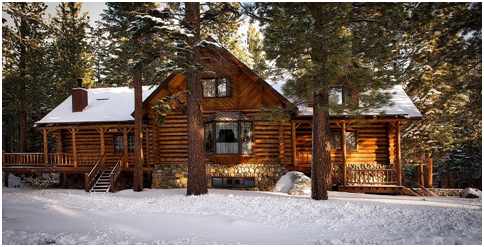Log cabins have log been a staple as a building choice in the United States and many European Countries. They have since gained in popularity both as holiday home options as well as permanent dwellings. One of the reasons they have been enjoyed for such a long period of time is because of the possibility of easy relocation. The original cabins could be dismantled, moved and re-erected at a new location should the owners wish.

It was pioneers settling in the mountain regions of the United States that brought about the popularity of the log cabin and brought about the romantic forest living view of the cabins. The rooms inside the cabins are like pieces of art in their own right, particularly the bedrooms. This further adds to the romanticised view of this type of living, along with the landscaping that occurs around the outside of the properties that complete the forest feel. The landscaping is usually natural in look with green shrubs used along with pebbles and larger stones.
If you are looking for Log Cabins Northern Ireland or anywhere you can find some great examples and a variety of sizes and designs to suit all. If you are interested then just click on Northern Ireland Log Cabins to take a look.

Now back to the building of a log cabin. A technique called chinking is sometimes used on some types of log cabins. This is where a construction material is placed between each log to prevent any gaps appearing due to the naturally uneven nature of the logs. This also helps to seal the property and prevent water and draughts from seeping into the cabin. Log cabins have been built in Scandinavian countries for many years and they are still a popular construction method now a days. One of the oldest log cabins is one located in Finland and it is thought to be around 4,000 years old.
One of the little-known facts about log cabins is that it is thought they can help to contribute to an overall sense of wellbeing and calmness and so can reduce stress levels. Also living in a log cabin is thought to reduce the instances of allergies due to the fact that the wooden construction allows air to circulate more freely and the building essential breaths, so it reduces the instance of high humidity which is where air-borne allergens like to thrive.
